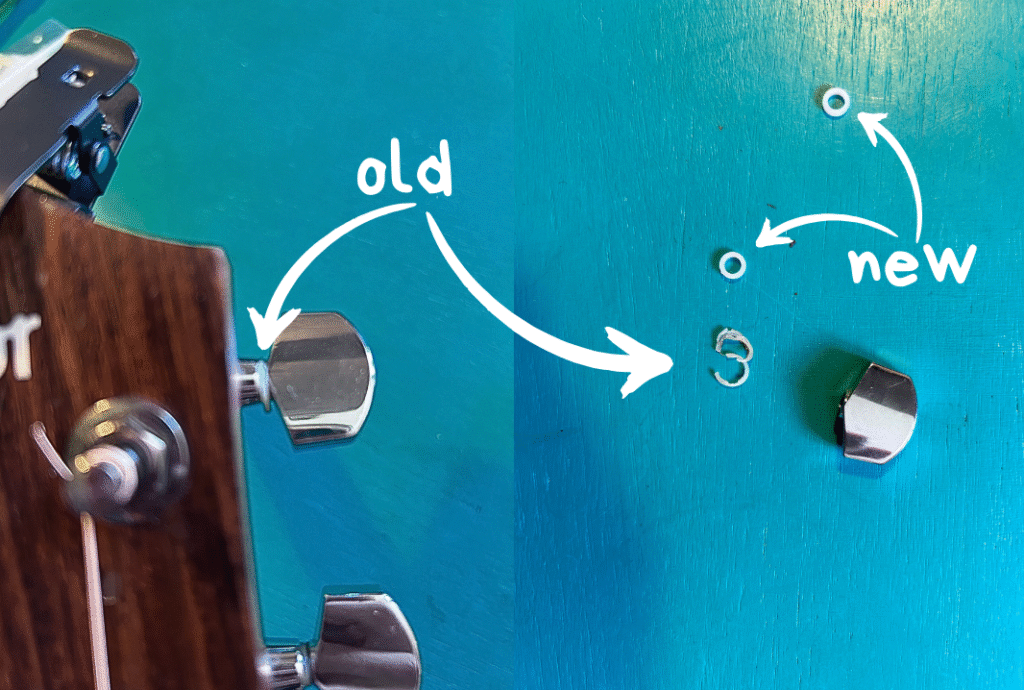If you’ve ever picked up your guitar, played a note, and heard an annoying buzz that just won’t go away—you’re not alone. Recently, I found myself chasing a persistent buzz on one of my guitars. It wasn’t fret buzz. It wasn’t the bridge. And it wasn’t coming from the strings themselves. It had that frustrating quality of being everywhere and nowhere at once. Sound familiar?
As someone who teaches guitar to students of all ages, I know how important it is to keep our instruments playing comfortably. Most of us aren’t looking for flashy speed solos—we want clean, clear tone and a guitar that feels right in the hands. So when mine started acting up, I had to get to the bottom of it.
I started checking the usual suspects—loose screws, uneven frets, neck relief, string height—but everything seemed fine. That’s when I looked a bit closer at the headstock and noticed something strange. Two of the machine head spacers (those little washers in the tuner mechanism) were completely flattened.
At first, I didn’t think much of it. But after doing a bit of digging, I learned that those tiny pieces of metal or plastic actually play a vital role in your guitar’s performance.

What Do Machine Head Spacers Do?
Machine head spacers—also called tuner washers—sit between the rotating part of the tuner (the bit you twist to tune) and the fixed casing that’s anchored to the guitar. They serve a few purposes:
- They help the tuner turn smoothly by keeping parts properly aligned.
- They prevent wear and tear inside the tuner housing.
- They reduce vibrations that can lead to unwanted buzzing or rattling sounds.
When these spacers are worn out, squashed, or missing entirely, the turning mechanism can become loose or slightly misaligned. That tiny bit of play can create subtle vibrations—enough to cause that mystery buzz that’s hard to identify.
Replacing Machine Head Spacers
Once I figured out the issue, I ordered a small set of replacement spacers online. Most tuners use fairly standard sizes, but it’s still a good idea to measure yours or take one to a local guitar shop for comparison.
To replace them:
- Loosen and remove the tuner nut using a socket wrench or spanner.
- Slide out the old, damaged spacers.
- Fit the new spacers into place.
- Reinstall the tuner hardware, tightening it just enough to be snug—don’t overtighten.
After swapping mine, the buzz disappeared immediately. Just like that. A small, inexpensive fix that made a big difference.
Final Thoughts
Keeping your instrument in good shape is essential to enjoying the process. If you ever encounter a mystery buzz, don’t forget to check your tuners—you might be surprised at what you find.


0 Comments